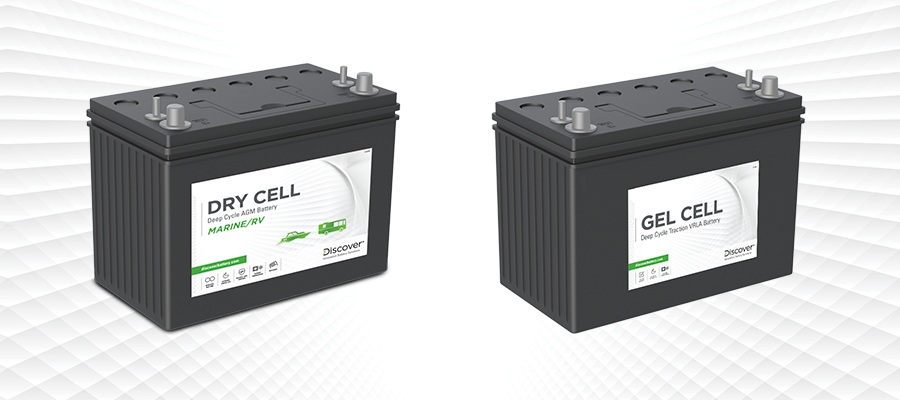
How does a GEL or AGM VRLA DRY CELL battery work?
Discover VRLA DRY CELL AGM and GEL batteries are designed using proven gas recombination technology which removes the need for regular water addition by controlling the evolution of hydrogen and oxygen during charging. This means that the oxygen typically produced on the positive plates of all lead-acid batteries is absorbed by the negative plate through a porous medium (see Figure 1) without being vented.
The porous medium in an AGM Dry Cell battery is the woven fibreglass mat. The porous medium in a GEL Dry Cell battery is the cracks in the GEL electrolyte. This suppresses the production of hydrogen at the negative plate. Water (H20) is produced instead, retaining the moisture within the battery. It never needs watering and should never be opened as this would “poison” the battery with additional oxygen from the air.
The retained oxygen produces an overpressure within the cell. This is normal. The battery’s high-quality sealing valves will not open at too low pressure because this would allow too much oxygen to escape and be irretrievably lost. If the highly controlled and defined opening pressure is achieved, the sealing valves will open quickly to release overpressure caused by the accumulated gas. Under normal operating conditions, this gas consists mainly of hydrogen. Under unfavourable conditions (high charge voltages at high temperatures, for instance), oxygen would also escape.
In quality VRLA DRY CELL AGM and GEL batteries, the quantity of electrolyte as a ratio to active material (plates and oxides) is controlled in such a way as to allow the battery to attain an expected performance and design life under normal operating conditions, taking into account:
- The rate of recombination
- The corrosion of the positive electrode (oxygen consumption)
- The losses by diffusion through the cell container
